Many different dogs have pointy ears. Often, these dogs are of the “spitz” type — think German shepherds and Siberian huskies. Pointy ears don’t indicate any particular personality traits. Many people may think pointy-eared dogs have a higher aggression level or are more alert.
However, there isn’t any connection between pointy ears and personality traits.
Dogs with pointy ears come in all different shapes and sizes — several smaller dogs with pointy ears, like pomeranians, and many larger dogs. You have many options if you’re set on finding a dog with pointy ears.
Let’s take a look at some of the most popular pointy-eared dogs.
1. Alaskan Malamute
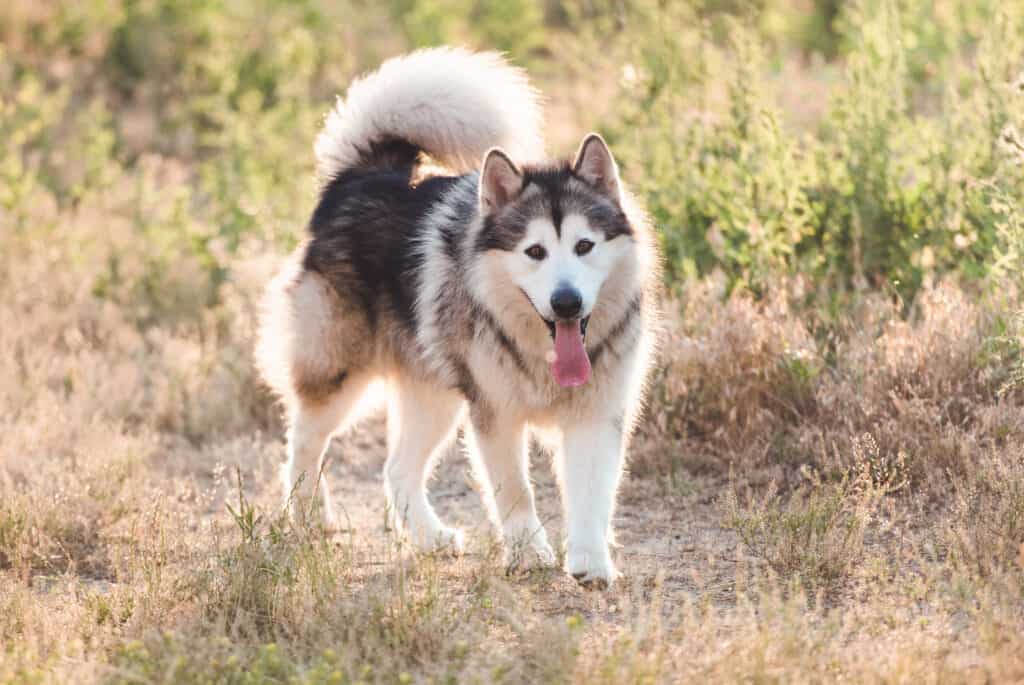
Alaskan Malamutes might look like huskies, but they are much bigger and more powerful.
©iStock.com/VYCHEGZHANINA
The Alaskan malamute weighs up to 85 pounds and stands up to 25 inches. They’re larger versions of the Siberian husky and share many similar traits. They’re powerful dogs, as they were initially bred to carry heavy sleds long distances. Their heavy coats protect them from harsh weather conditions, and their deep chest gives them more pulling power.
These canines are pack animals, so they prefer to be with their family as much as possible. This family can include humans and other dogs.
Training is required, as they are giant dogs. You must have control over them, or they can cause severe damage. Luckily, they are well-behaved, though they aren’t necessarily the most trainable dogs.
2. Australian Cattle Dog
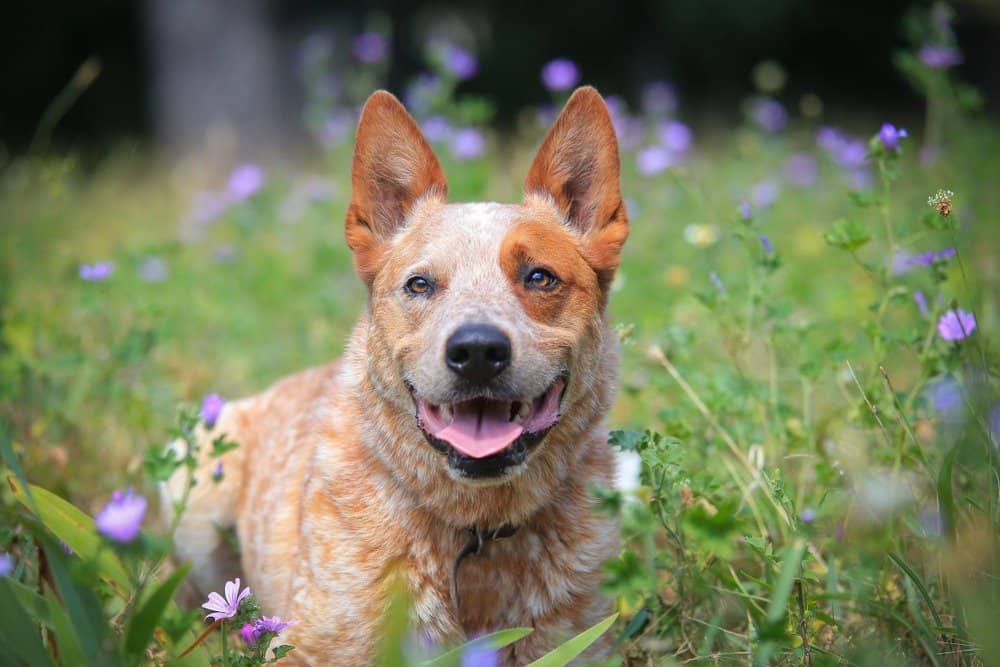
Australian cattle dog coats have red or gray mixed with an even amount of white.
©Melounix/Shutterstock.com
Australian cattle dogs still herd cattle over long distances and harsh terrain today, just like they did a hundred years ago. These “blue heelers” are kept as family dogs worldwide. They have very pointy ears. Their coat has red or gray mixed with an even amount of white, giving them a molted appearance. Most have some brown markings.
These canines have plenty of intelligence, making them very trainable. They were built for demanding, all-day work, making them sturdy and well-muscled. The Australian cattle dog also has a lot of energy, so you’ll need to keep them on a strict exercise regime. Often, this is a little much for inactive families to handle.
3. Basenji
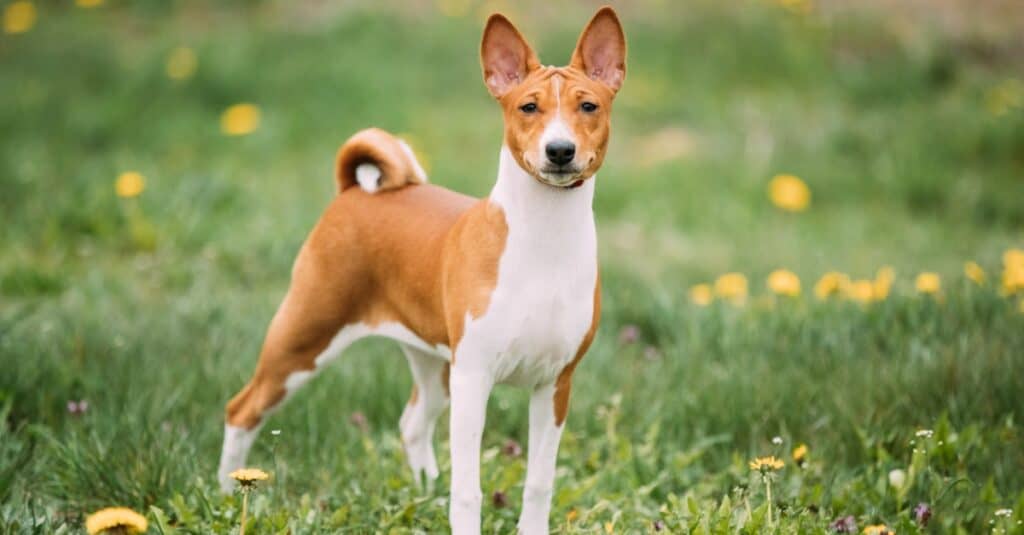
Basenji are often called “barkless dogs.”
©Grisha Bruev/Shutterstock.com
Basenji aren’t the most popular dog. However, they have some unique traits that set them apart and earn them their place on this list. They don’t bark, so they are often called “barkless dogs.” However, they make a bit of a yodle/screaming noise. Just because they’re barkless does not mean they are quiet.
These hounds don’t grow very large, standing at only 17 inches.
Many dog owners describe this breed as a “cat-like” dog. They tend to groom themselves like cats and may have the independent temperament of one. They have a cult-like following among a small number of dog owners.
4. West Highland Terrier

Despite being small dogs, West Highland terriers have a hardy disposition and build.
©BIGANDT.COM/Shutterstock.com
West Highland terriers act and look very similar to other terriers. Initially, the breed chased rats and other small animals, keeping them far away from farms and grain stores. However, they are utilized chiefly for companionship. Despite being small dogs, they have a hardy disposition and build. Therefore, they tend to be healthier than other small dog breeds.
While they are working dogs, they have a plushy outer appearance. Therefore, they make great choices for those who want a smaller, cuddly dog and a canine that is a bit more active and sturdy.
Westies are great for families with small children. They have an extremely playful attitude and are sturdy enough to withstand plenty of play.
5. Siberian Husky
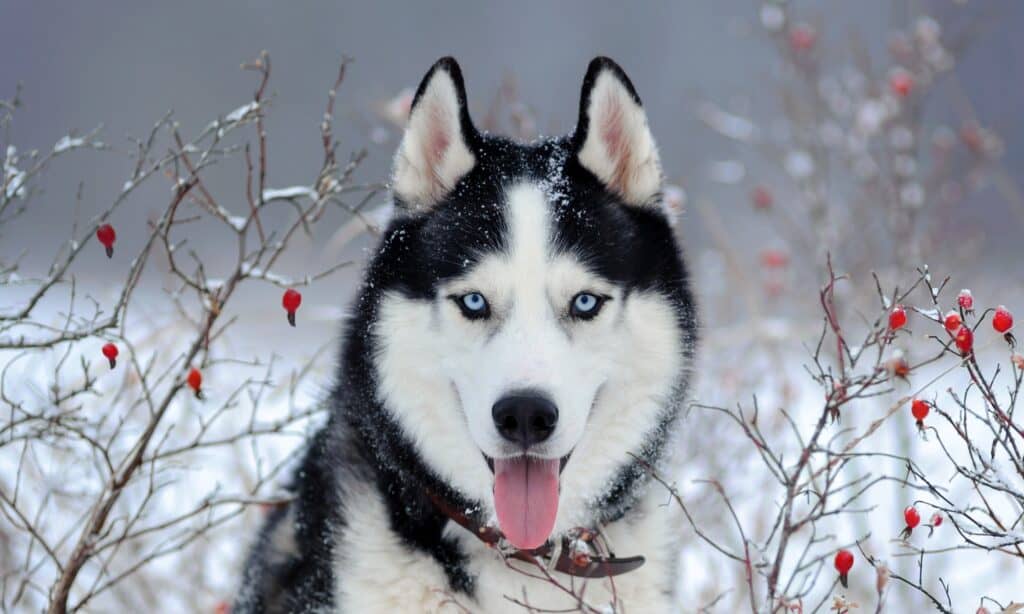
Siberian huskies have a friendly and energetic temperament.
©iStock.com/format35
The Siberian husky was bred to haul sleds in the northern portion of North America. They are smaller than Malamutes but have many of the same characteristics beyond that. Typically, they aren’t any larger than 60 pounds, though some larger variations do exist. These canines have a friendly and energetic temperament. They retain their playfulness into adulthood and seem to mature slower than other dogs – temperamentally speaking.
This breed has a highly energetic temperament. They require a lot of exercise but don’t tend to calm down even after meeting their exercise needs. They have a significant prey drive, despite not being hunting dogs. Their energetic nature often plays a role in this.
Luckily, these dogs have a natural doggy odor. Therefore, those sensitive to smells may want to choose this canine.
6. Rat Terrier

Rat terriers have a high prey drive and grow very small.
©iStock.com/sjallenphotography
Americans bred the rat terrier to work as a ratting dog. Their primary purpose was to chase rats away and keep farms free from pests. Therefore, these canines have a high prey drive and grow very small. They only reach 18 inches at most, but the miniature dogs are below 13 inches.
They are terriers to their core. Typically, these dogs require a lot of exercise, but they’re just energetic overall — even when their exercise needs are met. These terriers have a tough, sleek look. They’re quite elegant, though, especially due to their streamlined fur.
7. German Shepherd
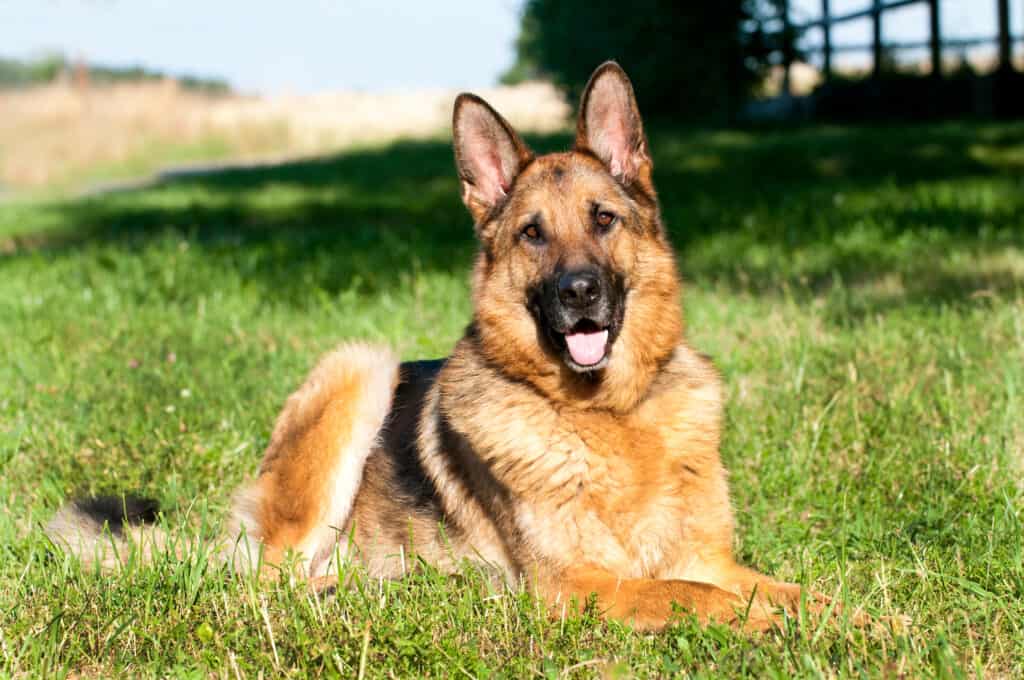
German shepherds were originally bred to guard livestock.
©Dora Zett/Shutterstock.com
Practically everyone knows what German shepherds are. After all, they’re one of the most popular dog breeds in the U.S., and they enjoy widespread popularity over much of the world. They’re incredibly large and have substantial guarding instincts. As their name suggests, they were originally bred to guard livestock.
However, today, they are mostly utilized in police and military work, as well as personal guard dogs. These canines make great guard animals, though they tend to be extremely iffy regarding strangers. Therefore, they require a lot of training and socialization. Otherwise, they can be unnecessarily aggressive.
German shepherds are known for being smart and trainable. They’re extremely loyal to their masters, though they can be first-person dogs.
8. Chihuahua
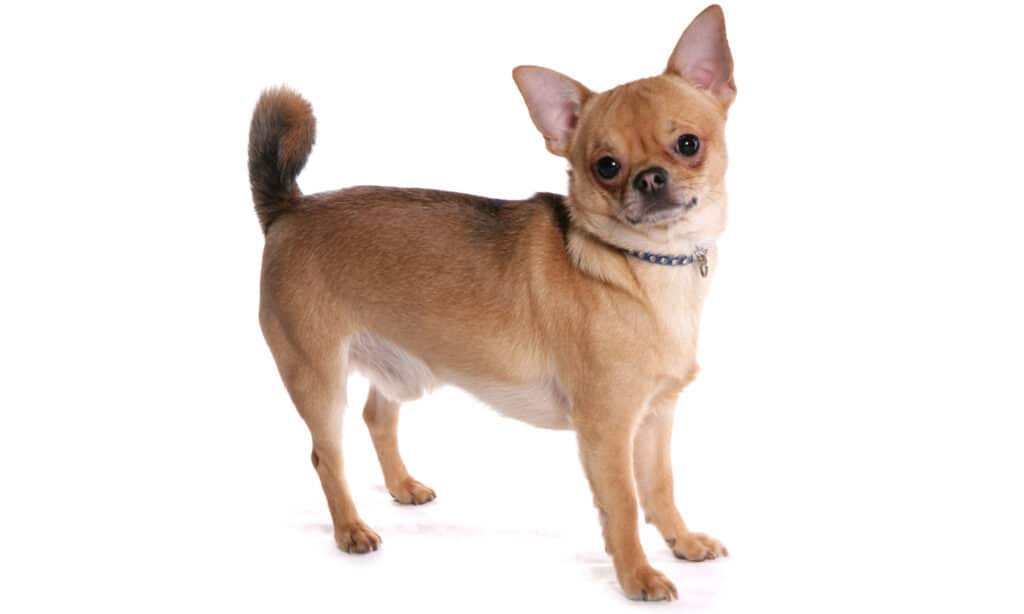
Chihuahuas have a “big dog” attitude and can be challenging to train.
©chrisbrignell/Shutterstock.com
Chihuahuas are another fairly popular dog with pointy ears. They resemble terriers but without the same high prey drive. They still like to chase things, but they aren’t quite as energetic as other terriers. Their smaller size makes them perfect for apartment living. However, their smaller size may also lead to health issues. For instance, they often have trouble maintaining their blood sugar, especially as puppies.
Of course, they are also more likely to get physically injured because they are so small.
These dogs have a “big dog” attitude and can be challenging to train. However, their smaller size also makes them easier to take care of. Their food costs and vet expenses are typically lower simply because they’re smaller.
9. Corgi

Corgis are squat dogs with larger bodies.
©iStock.com/Karyna Demianiuk
There are two types of corgis: cardigan Welsh corgis and Pembroke Welsh corgis. Both of these breeds have pointy ears, and both were developed for similar reasons. However, there are smaller differences between them, so study both before deciding on one. For instance, Pembrokes don’t have tails, while cardigans do.
Corgis weigh up to 34 pounds. They’re squat dogs with larger bodies. Their elongated backs sometimes lead to health issues, though. They’re more prone to spinal issues, for instance. They’re quite powerful dogs, but they can be agile when they want to be.
Socialization is vital for these dogs, as they can be aloof. However, when properly socialized, they are agreeable and good with most families, even children.
10. Belgian Malinois
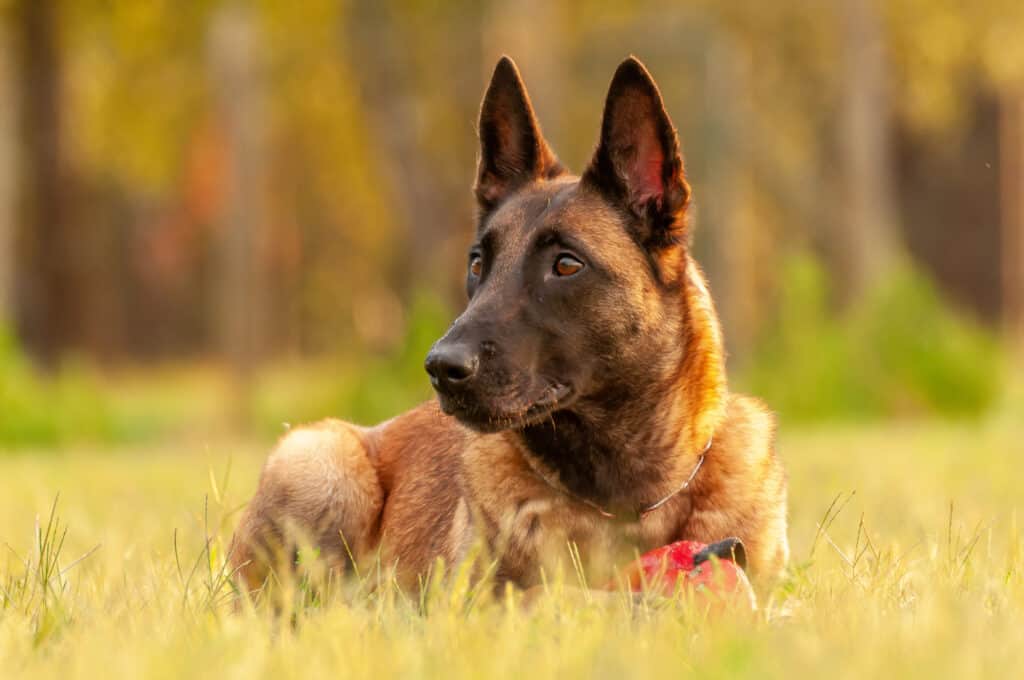
The Belgian malinois looks similar to a
German shepherd
.
©Nordantin/Shutterstock.com
The Belgian malinois was a rarer breed. However, they’ve recently become more popular due to their appearance in several movies. German shepherds have slowly become more companion animals than other breeds. To take their place as working police dogs, the Belgian malinois has stepped up.
These canines are extremely strong and have plenty of muscle. However, they are aloof from most humans. Therefore, you must socialize them and train them well. Luckily, this breed is also extremely smart, so training tends to be much easier than others.
The Belgian malinois is completely devoted to its family, following commands more accurately than most other dogs. However, they’re extremely active and require a lot of mental stimulation. While they have a lot to give, they also require a lot of work. Don’t adopt one unless you have the time and energy.
11. Papillon
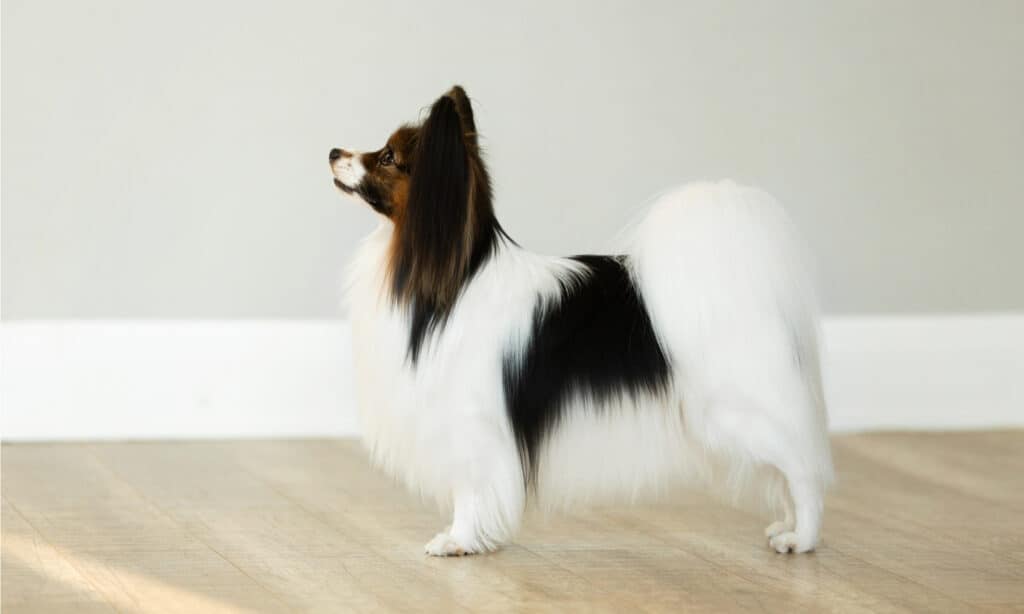
Papillons require a lot of exercise and can be very yappy.
©Anastasiia Cherniavskaia/Shutterstock.com
Papillon means “butterfly.” Due to this dog’s pointy ears and all the fur that comes from them, they look like their ears outline a butterfly.
These canines may look small and fluffy, but they require a lot of exercise and can be very yappy. They aren’t your average toy dog. They tend to be much healthier than other dogs. They’re athletic and have a hardy disposition.
Some of these dogs have floppy ears instead of the usual upright ones. Therefore, if you want a Papillon with pointy ears, you’ll have to find a breeder that breeds this specific type.
These canines thrive in practically all climates. They’re at home in an apartment, as well as in the country. They’re very versatile dogs, though they function primarily as companion animals.
12. Samoyed
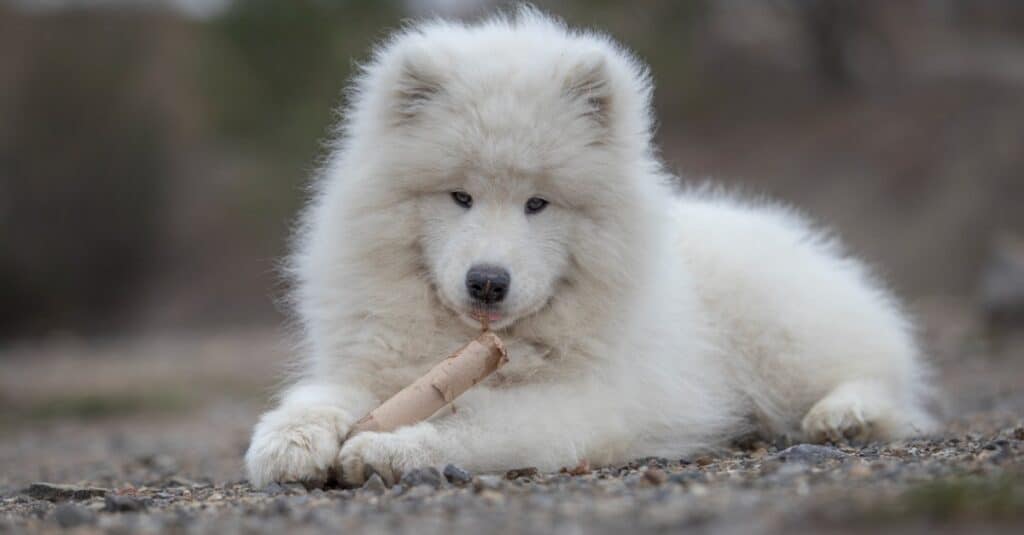
This soft dog breed, the Samoyed, is a big-time snuggler.
©iStock.com/Roman Bjuty
The Samoyed is another dog with pointy ears, though you may not see them very well due to all their fluff. They’re somewhat larger, standing between 19-23 inches. They’re beautiful dogs with very white, fluffy coats. However, they are also very functional. Their coat protects them from the elements, and their upturned mouths prevent icicles from forming on their mouths.
These dogs love their people and require lots of attention. However, they love just about everyone, not just their family. They prefer staying in a pack, even if that pack is only made up of one other dog. Adopting two Samoyed is recommended if you don’t have any other dogs (but avoid littermate syndrome).
Samoyeds can become destructive in some cases. However, when cared for properly, they are pretty great companions.
13. Bull Terrier
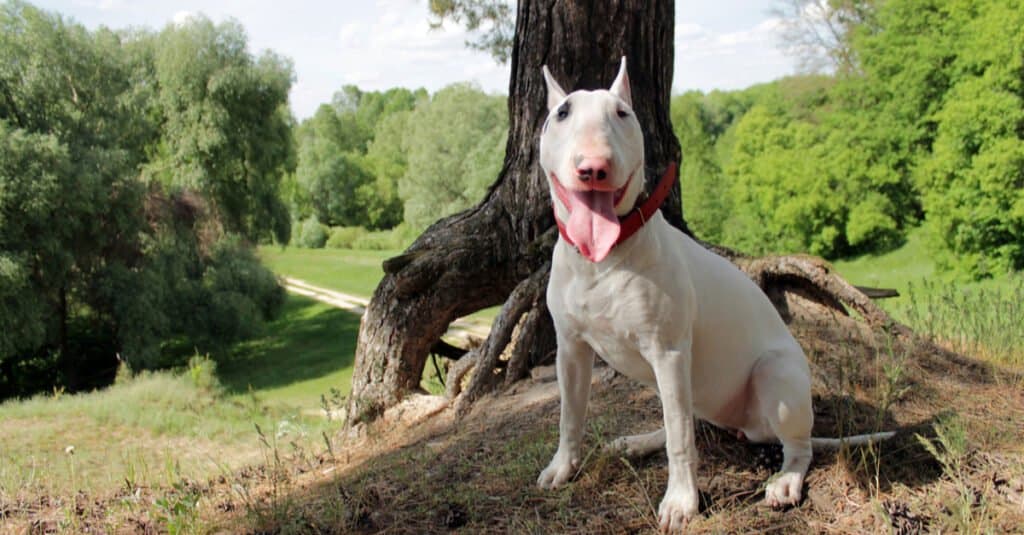
Bull terriers are very energetic and athletic.
©Anna_Bondarenko/Shutterstock.com
Bull terriers‘ unique appearance easily sets them apart from other dogs. This breed is mischievous and may fall into the “personality dog” category. Most dog owners that have them talk tons about their fun-loving personalities. They are absolutely fun to be around. They thrive on affection and require quite a bit of exercise. Despite mostly being kept as companions today, they are very energetic and athletic.
These canines can be a bit unsettled around other dogs and people. They require early socialization to prevent potential fear and aggression later. Training is highly recommended, as it is for most breeds. However, they prefer a lot of quality time with their humans. Therefore, we only recommend them for those with serious time on their hands.
14. French Bulldog
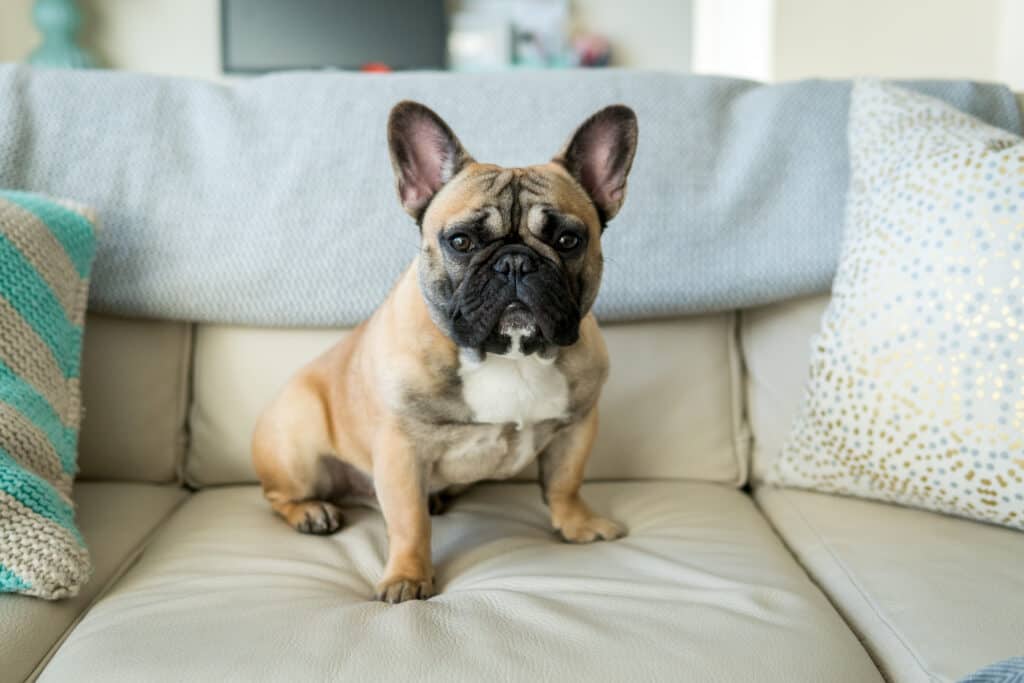
French bulldogs aren’t the smartest dogs but tend to be well-behaved.
©Lined Photo/Shutterstock.com
French bulldogs didn’t always have upright, pointy ears. In fact, this feature was a bit of a sticking point during their early development. Slowly, the breed was bred to have “bat ears.” However, many breeders thought that they shouldn’t have upright ears, as they originally did not. Others thought that it was their unique ears that set them apart from other canines.
These dogs were always bred to be companions. That was their original purpose, so they have many traits associated with good companion dogs. For instance, they have a low exercise need and are very people-oriented. They aren’t the smartest dogs but tend to be well-behaved.
Often, French bulldogs love just about everyone. Therefore, we recommend them to most families. Their smaller size makes them a bit vulnerable around small children, though. They’re easily injured and may fear small children without proper socialization.
15. Boston Terriers

Boston terriers are fun-loving, easy to care for, and people-oriented.
©Lenka_N/Shutterstock.com
Despite being terriers, these canines don’t act much like terriers. They’re lively canines that were bred exclusively to be companion animals. Therefore, they’re fun-loving, easy to care for, and people-oriented. Their shorter faces are meant to make them “cute,” but this deformity leads to many different health problems. Many Boston terriers cannot breathe correctly, for instance.
This difficulty breathing leads to issues with surgeries, exercise, and hot weather conditions. These dogs have a shortened lifespan due to all these health problems.
However, dog owners who love Boston terriers love their curiosity, big personality, and affection. They are designed solely to be companion animals, and it shows.
16. Shiba Inu

Shiba Inu act more cat-like than other dogs.
©Chendongshan/Shutterstock.com
The Shiba Inu is an Asian dog once utilized as a hunter. They remain extremely well-muscled today and have a strong prey drive. However, they can make good pets for apartments and smaller spaces with proper exercise. They are a recently introduced breed into the western world, as they weren’t brought to America until around 60 years ago.
However, their popularity has taken off. It isn’t hard to find breeders in the U.S. specializing in this breed. They already enjoy a lot of popularity in their homeland, as well.
With that said, these dogs aren’t the friendliest and require a lot of socialization. Otherwise, they can become aggressive and territorial. Often, they don’t do well with other dogs, in particular. This dog with point ears also acts more cat-like than other dogs. Many tend to clean themselves similarly to cats and display more independent characteristics.
17. German Spitz
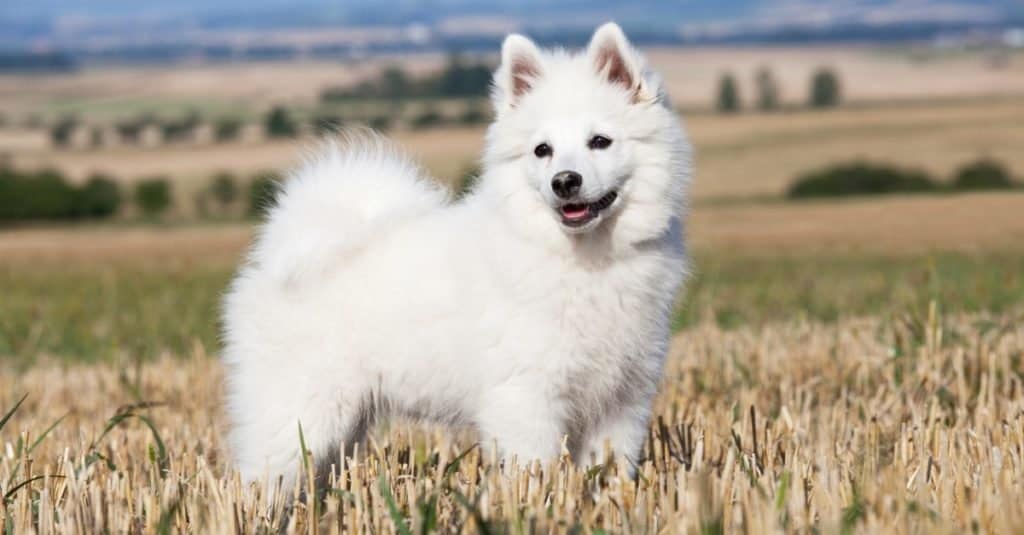
The
German spitz
has a thick, beautiful coat.
©Lenkadan/Shutterstock.com
Another dog with pointy ears, the German spitz has a lively and devoted personality. They have an attentive temperament and are extremely people-oriented. Therefore, they’re adorable companion animals if you love the look of a husky but not the huge size.
These canines do have a distrust towards strangers. Often, they require a lot of socialization and training to be friendly toward others. However, if you want a small dog that won’t continuously annoy your guest, this aloof breed may be a solid option.
The German spitz has a thick, beautiful coat. However, this coat’s main purpose is to protect them from rough weather. It isn’t just something pretty. There are several sizes of this canine, and they all have pointy ears. Many looking for smaller dogs prefer the toy German spitz, but they are more challenging.
These canines require lots of training, as they aren’t necessarily the most obedient.
18. Swedish Vallhund

Swedish vallhund almost look like tiny German shepherds.
©Vera Reva/Shutterstock.com
If you want an unusual dog, you should consider the Swedish vallhund. These canines were bred and developed during the Viking age. They have plenty of energy and a very practical appearance. They almost look like tiny German shepherds but have the elongated back of a beagle or corgi.
Their shorter build performs the same function as it does for the corgi. Their smaller legs allow them to easily dodge cattle hooves, while their sturdy body still makes them practical for surviving colder temperatures.
Vallhunds are an ancient breed. They have few health problems, as they were largely bred for practical purposes. Therefore, they’re a no-frills breed, making them great for those looking for a healthy, active companion.
Summary of Types of Dogs With Pointy Ears
| Dog Breed | Fun Fact | |
|---|---|---|
| 1 | Alaskan Malamute | They were bred to carry heavy sleds over snow |
| 2 | Australian Cattle Dog | As their name implies – these dogs were bred to herd cattle over 100 years ago |
| 3 | Basenji | They don’t bark – but they can yodel |
| 4 | West Highland Terrier | They are one of the healthiest small dog breeds |
| 5 | Siberian Husky | Another sled dog – Siberian Huskies are known for their beautiful blue eyes |
| 6 | Rat Terrier | Bred to hunt rats – these little dogs are full of energy |
| 7 | German Shepherd | This intelligent breed is often trained to serve in the military |
| 8 | Chihuahua | The smallest dog breed – Chihuahuas have a big dog attitude and make great watchdogs |
| 9 | Corgi | These adorable dogs can be aloof if not socialized as pups |
| 10 | Belgian Malinois | Extremely intelligent – this breed is becoming a popular choice of police forces everywhere |
| 11 | Papillon | Athletic and energetic – the Papillon is a great companion for active people |
| 12 | Samoyed | Fluffy and cuddly – Samoyed’s love being part of a tiny pack of two dogs |
| 13 | Bull Terrier | These fun-loving dogs need owners willing to devote time to their training |
| 14 | French Bulldog | Bred to be companions – these little cuties love everybody |
| 15 | Boston Terriers | Their adorable pug faces can lead to breathing issues |
| 16 | Shiba Inu | New to Western dog lovers – this Asian breed has many cat-like qualities |
| 17 | German Spitz | These fluffy cuties require a lot of training and socialization as pups |
| 18 | Swedish Vallhund | Bred during the Viking Age – they are a dependable, no-frills companion |
The photo featured at the top of this post is © Vera Reva/Shutterstock.com
Ready to discover the top 10 cutest dog breeds in the entire world?
How about the fastest dogs, the largest dogs and those that are -- quite frankly -- just the kindest dogs on the planet? Each day, AZ Animals sends out lists just like this to our thousands of email subscribers. And the best part? It's FREE. Join today by entering your email below.
Thank you for reading! Have some feedback for us? Contact the AZ Animals editorial team.







